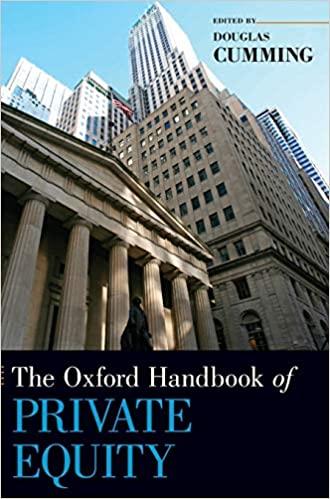Question
Briefly explain the 3Com-Palm Puzzle, how you would have corrected the mispricing, and what may have stopped you from doing so? (Refer to article below):
Briefly explain the 3Com-Palm Puzzle, how you would have corrected the mispricing, and what may have stopped you from doing so? (Refer to article below):
Corporate Spinoffs: Can the Stock Market Multiply by 1.5?
A situation where the relationship between the price of two stocks is bounded by some common ratio can arise in the case of a corporate spinoff. One example occurred in 1999 when a Silicon Valley technology company called 3Com felt that the stock market was not giving their shares proper respect, in spite of the fact that 3Com owned the Palm division, maker of the hot new handheld computers. 3Com decided to spin off its Palm division, presumably to unleash its true value. Notice that this action in and of itself is suspicious from a Law-abiding perspectiveif the same cash flows always have the same price, why should bundling or unbundling securities change value?
To initiate this divorce, 3Com adopted a two-step process. The first step was an equity carve-out, in which 3Com sold a small portion of the. value of Palm in an initial public offering (IPO). Specifically, 4% of the shares of Palm were sold in the IPO and another 1% was sold to a consortium of institutional investors. The second step, called the spinoff, would take place in about 6 months. At this point, the remaining 95% of the shares would be distributed to 3Com shareholders. When the spinoff took place, each 3Com shareholder would receive 1.5 shares of Palm. In this case, the Law requires that investors obey an inequality, namely, that once Palm shares start trading, shares of 3Com must sell for at a price equal or greater than 1.5 times the price of Palm.
On the day before the IPO, 3Com was selling for $104. The Palm shares were sold to the public at $38 a share, but ended the day selling for $95 (after trading as high as $165!). During this same day, the stock price of 3Com actually fell 21% during the day to $82. To see how ludicrous this price is, consider the so-called stub value of 3Com, which is the implied value of 3Coms non-Palm assets and businesses. To compute the stub value, one just has to multiply the Palm
share price by 1.5 to get $145 and then subtract this from the value of 3Com, obtaining the novel result of a negative $63 per share (using the precise ratio of 1.525). Indeed, the market was valuing the remaining (protable) 3Com business at minus $22 billion. To add insult to injury, 3Com had about $10 a share in cash! Investors were willing to pay over $2.5 billion dollars (based on the number of Palm shares issued) to buy expensive shares of Palm rather than buy the cheap Palm shares embedded in 3Com and get 3Com thrown in.
This example is even more puzzling than that of closed-end funds or twin stocks, because there is a clear termination date. To prot from the mispricing, an arbitrageur would need only to buy one share of 3Com, short 1.5 shares of Palm and wait six months or so. In essence, the arbitrageur would be buying a security worth at worst worth zero for $63 and would not need to wait very long to realize the profits. The spinoff did depend on a favorable IRS ruling, but this appeared highly likely. Figure 3 shows the actual time pattern of the stub value of 3Com, that is, its non-Palm assets. As can be seen, the stub returned to a more rational level after several months.
This mispricing was not in an obscure corner of capital markets, but rather took place in a widely publicized initial public offering that attracted frenzied attention. The nature of the mispricing was so simple that even the dimmest of market participants was able to grasp it. On the day after the issue, the mispricing was widely discussed, including in two articles in the Wall Street Journal, one in the New York Times, and it even made USA Today!
Step by Step Solution
There are 3 Steps involved in it
Step: 1

Get Instant Access to Expert-Tailored Solutions
See step-by-step solutions with expert insights and AI powered tools for academic success
Step: 2

Step: 3

Ace Your Homework with AI
Get the answers you need in no time with our AI-driven, step-by-step assistance
Get Started


